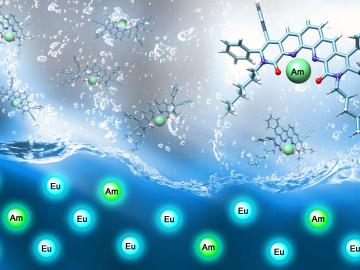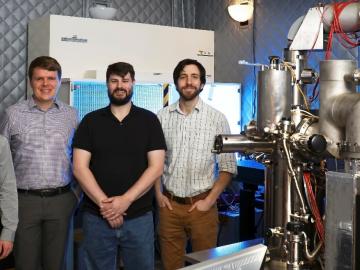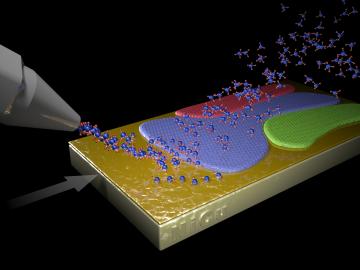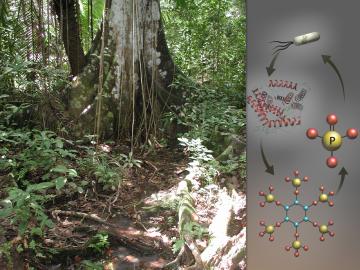
Filter News
Area of Research
- (-) Materials (128)
- (-) Supercomputing (96)
- Advanced Manufacturing (3)
- Biological Systems (3)
- Biology and Environment (60)
- Building Technologies (3)
- Clean Energy (111)
- Climate and Environmental Systems (2)
- Computational Biology (1)
- Computational Engineering (1)
- Computer Science (2)
- Electricity and Smart Grid (1)
- Energy Frontier Research Centers (1)
- Energy Sciences (1)
- Fossil Energy (1)
- Fuel Cycle Science and Technology (2)
- Fusion and Fission (19)
- Fusion Energy (4)
- Isotope Development and Production (1)
- Isotopes (15)
- Materials Characterization (2)
- Materials Under Extremes (1)
- National Security (28)
- Neutron Science (58)
- Nuclear Science and Technology (16)
- Nuclear Systems Modeling, Simulation and Validation (1)
- Sensors and Controls (2)
News Topics
- 3-D Printing/Advanced Manufacturing (6)
- Advanced Reactors (1)
- Artificial Intelligence (15)
- Big Data (3)
- Bioenergy (4)
- Biology (4)
- Biomedical (6)
- Biotechnology (2)
- Buildings (3)
- Chemical Sciences (16)
- Climate Change (12)
- Composites (4)
- Computer Science (17)
- Coronavirus (2)
- Critical Materials (5)
- Cybersecurity (1)
- Decarbonization (6)
- Energy Storage (6)
- Environment (8)
- Exascale Computing (12)
- Frontier (15)
- Fusion (3)
- Grid (3)
- High-Performance Computing (18)
- Irradiation (1)
- Isotopes (8)
- Machine Learning (4)
- Materials (42)
- Materials Science (14)
- Microscopy (8)
- Molten Salt (1)
- Nanotechnology (10)
- National Security (3)
- Net Zero (2)
- Neutron Science (11)
- Nuclear Energy (7)
- Partnerships (6)
- Physics (15)
- Polymers (8)
- Quantum Computing (8)
- Quantum Science (6)
- Renewable Energy (1)
- Security (1)
- Simulation (9)
- Software (1)
- Space Exploration (1)
- Summit (8)
- Sustainable Energy (2)
- Transportation (5)
Media Contacts
Scientists at Oak Ridge National Laboratory have conducted a series of breakthrough experimental and computational studies that cast doubt on a 40-year-old theory describing how polymers in plastic materials behave during processing.



A scientific team led by the Department of Energy’s Oak Ridge National Laboratory has found a new way to take the local temperature of a material from an area about a billionth of a meter wide, or approximately 100,000 times thinner than a human hair. This discove...

A new method to produce large, monolayer single-crystal-like graphene films more than a foot long relies on harnessing a “survival of the fittest” competition among crystals. The novel technique, developed by a team led by Oak Ridge National Laboratory, may open new opportunities for growing the high-quality two-dimensional materials necessary for long-awaited practical applications.

Nuclear scientists at Oak Ridge National Laboratory are retooling existing software used to simulate radiation transport in small modular reactors, or SMRs, to run more efficiently on next-generation supercomputers. ORNL is working on various aspects of advanced SMR designs through s...


A novel method developed at Oak Ridge National Laboratory creates supertough renewable plastic with improved manufacturability. Working with polylactic acid, a biobased plastic often used in packaging, textiles, biomedical implants and 3D printing, the research team added tiny amo...




